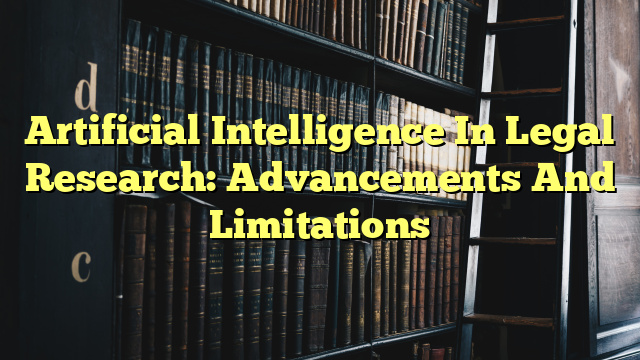Artificial intelligence (AI) has revolutionized legal research. AI is now used to automate tasks that were traditionally done manually, such as sorting through large volumes of information, extracting key facts, and analyzing legal documents. AI technologies have enabled lawyers to work more quickly and accurately, while reducing the cost of legal services. However, AI has its own limitations and potential downsides, and lawyers must be aware of these boundaries when considering the use of AI in legal research.
The Impact of AI in Legal Research
AI has had a significant impact on legal research. AI can help lawyers to quickly and accurately identify relevant documents, analyze complex legal issues, and quickly compile and review large volumes of data. This has allowed lawyers to work more efficiently and accurately, while reducing the cost of legal services.
AI technologies can also provide insight into complex legal issues that might otherwise have been difficult to analyze. AI can analyze large volumes of data, identify patterns, and provide lawyers with a more detailed understanding of the legal issues involved. This can help lawyers to better understand the implications of their decisions, resulting in better-informed decisions.
Research Limitations of AI
Despite the potential benefits of AI in legal research, there are some limitations. AI systems are not perfect and can produce inaccurate results if the data is not properly processed. For example, AI systems are not capable of understanding legal concepts, and so can only analyze data to identify patterns and correlations. This means that AI cannot provide lawyers with legal advice and may not be able to identify the full implications of a decision.
AI systems are also limited in their ability to interpret complex documents, such as contracts or legislation. AI systems can only analyze the content of documents, but may not be able to understand the context in which a document was written or intended. This can lead to inaccurate results, as the AI system may produce results that are not in line with the actual legal implications of the document.
Disadvantages of AI in Legal Research
The use of AI in legal research can also have some potential downsides. AI systems are often expensive to purchase and maintain, which can increase the cost of legal services. Furthermore, AI systems can be slow to produce results, which can lead to prolonged delays in legal proceedings.
AI systems are also limited in their ability to provide legal advice. AI systems can only analyze data and identify patterns, but cannot provide lawyers with legal advice. This means that lawyers must still rely on their own judgement and expertise to make decisions.
Finally, AI systems can be susceptible to bias. AI systems learn from the data that they are given, which means that the data must be accurate and complete. If the data is incomplete or biased, the AI system will produce results that are not reliable.
Advantages and Disadvantages of Artificial Intelligence Research
The use of AI in legal research has both advantages and disadvantages. AI systems can enable lawyers to work more quickly and accurately, while reducing the cost of legal services. However, AI systems are limited in their ability to provide legal advice, can be slow to produce results, and can be costly to purchase and maintain. In addition, AI systems can be susceptible to bias if the data is not accurate or complete.
In conclusion, AI can be a valuable tool for lawyers, but it is important to be aware of its limitations. Lawyers must consider the advantages and disadvantages of AI in legal research before deciding whether to use it. By understanding the potential risks and benefits of AI in legal research, lawyers can make more informed decisions and ensure that their legal work is accurate and efficient.


AI has many potential applications in legal research, however I question the extent to which it can provide a reliable, comprehensive analysis. Artificial intelligence remains limited in its ability to draw qualified conclusions.